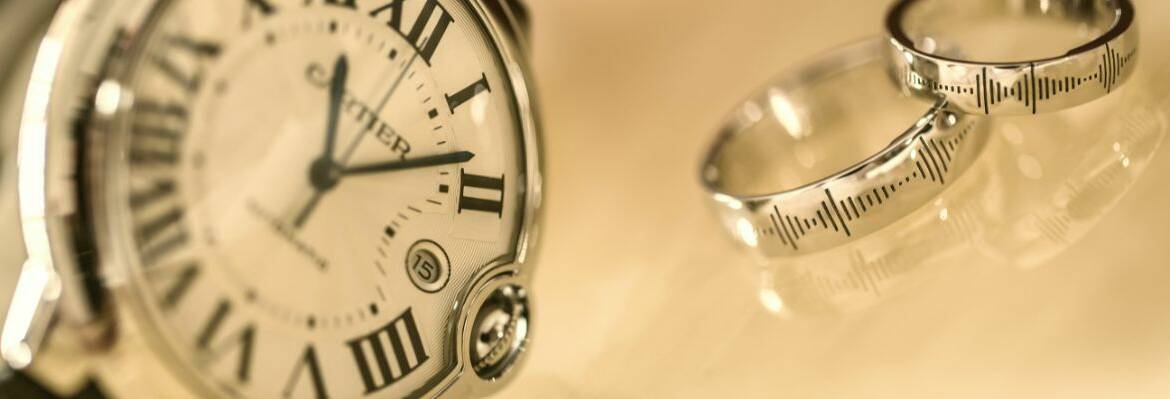How To Clean Your Luxury Watch
Keep reading for the best tips on how to clean your luxury watch.
Take caution before washing
Before you decide to wash or clean your luxury watches, you must take important measures to ensure the watch lasts for a long time, so you can also increase the value of your watch. The first is to ensure that any watch you wash is made from water-resistant material and has a metal case or bracelet. The best material is stainless steel, as other metals, such as gold, tend to retain scratches easily.
Also, avoid cleaning your vintage watches, or those with leather bands, as this will destroy the watch entirely.
Ensure that any watch with screw-down components has its screws tightly in place before you submerge the unit into water. If cleaning is not for you, you can opt to service your Rolex or other luxury watch instead.
1. Assemble your apparatus
To ensure your cleaning is thorough and not haphazard, it is always best to gather everything you will need for the cleaning process. The major items you’ll need to get the job done include:
- Tool kit
- Bowls of warm water
- Soap
- Soft brush for scrubbing
- 2 soft cloths for washing and drying your watch.
2. Remove the bracelet
Thorough cleaning of your watch will demand that you remove the bracelet from your watch case. This aims to give you more access to all the accumulated grime, making the cleaning process thorough. To remove the bracelet, you’ll need to check both sides of the case lugs and carefully remove the bracelet with the necessary tools from your tool kit. Once complete, you have your bracelet and case separate from each other and all grime visible enough to remove.
3. Wash the watch case
It’s time to use the two bowls. One bowl is meant for soapy water and the other water for rising. Add a considerable amount of warm water and a few drops of dish soap to the first bowl. Make sure to swish it to make it soapy and in a better state to receive the diary watch.
Submerge your water-resistant watch case into the soapy water. To prevent water from entering your timepiece, you’ll have to ensure that all crowns and pushers are screwed into the case.
With the luxury watch case still submerged, rub the surface of the case using your fingers. After the surface, rub the camelback and dial side of your watch, removing any dirt or grime. You can take the cleaning up a notch by using a soft brush. Run the brush along the lugs, case back, and bezel, making sure to avoid the crystal. The crystal will be cleaned later with one of the soft clothes.
4. Rinsing
The next step is to rinse the watch case. In comes your second bowl, which you should fill with clean, warm water.
Rinsing should be slow and thorough to ensure all the soap has been removed or cleaned. However, you might need more than one water bowl, as you will have to refill the bowl with clean water a few more times until all the soap in your watch is gone.
After rising, dry your watch case using one of the soft cloths, and try to get as much water as possible off the surface of your watch case. Set it aside to dry even further.
5. Washing the bracelet
Like the watch case, fill your bowl with a new batch of warm soapy water, and submerge your watch bracelet into the mix. Leave it in for a few minutes to allow the dirt to loosen for easy removal.
Remove the bracelet from the water using your soft brush and scrub it gently. Be sure to dip the brush into the soapy water repeatedly, and aim at cleaning the topside and underside of your watch bracelet. Also, scrub between the links as grime found there can cause bracelet stretching over long periods.
Lastly, use the soft brush to wash dirt from beneath the watch clasp, where a lot of dirt goes to settle.
Once the bracelet is dry and clean, you can move it into your second bowl, which you should fill with clean water for cleansing. Some people suggest rinsing the watch bracelet under running water to better remove all soap remnants. Use your soft cloth to dry the bracelet, or if you’re up for it, try using your hairdryer on its lowest setting to remove unwanted moisture.
6. Reattach your watch parts
Now that the watch case and bracelet have been washed, rinsed, and dried, it is time to put them together. Attach these two pieces only when you’re certain they’re dry and do so with the right rolls from your tool kit. Once this is done, you’re ready to wear your clean watch and enjoy.
Final Tips
How often you clean your watch will depend on how often you wear the watch and how dirty it is bound to get. While some watch wearers clean their watches once a month, others prefer to do it weekly. Experts advise washing your watch with soap and water whenever you come home from outside. This can be a quick wash with warm running water and a little dish soap on the tip of your fingers. You can stretch deeper cleaning between these to prolong your watch’s lifespan and prevent it from fading or experiencing damage.

